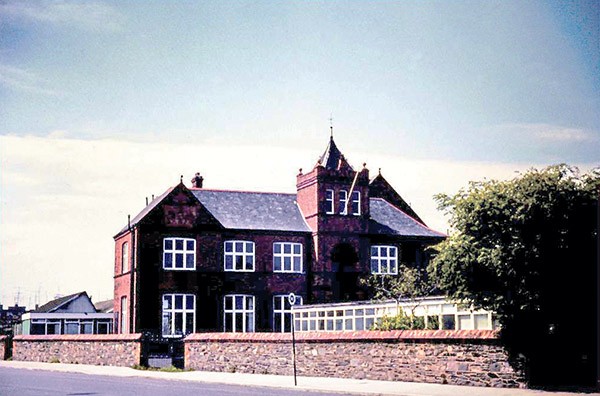
Image of Ringsend Tech supplied by Harry Havelin.
I have fond, though now distant, memories of the term I spent in Ringsend Technical School over 50 years ago.
In those days, after completion of the Intermediate Certificate (at age 15/16), some students continued on to do the Leaving Certificate, others headed out into the big, bad world to start work, while others spent their post-Inter Cert year doing what was known as the Group Trade Certificate in a technical school.
I was one of those who did the Group Cert in Ringsend Tech during the term September 1963 to June 1964. I didn’t live in the Ringsend area, so it meant a daily trek from my home in Broadstone to the Tech, sometimes by bicycle, sometimes by bus.
The Group Cert gave young men (and it was all young men back then) an introduction to several trades over a period of a year, after which they could decide what career path they wished to follow. The technical schools back then were run by the City of Dublin Vocational Education Committee (CDVEC).
When I started in Ringsend in September, 1963, the courses available were: woodwork, magnetism and electricity, mechanical drawing, motor mechanics, metalwork, English, Irish and religion (Roman Catholic). Of those, I did magnetism and electricity, mechanical drawing, metalwork, English, Irish and religion.
The red-bricked Ringsend Tech on Cambridge Road was a bleak, run-down building, badly in need of a basic paint job, let alone major refurbishing.
I well remember the serious dampness throughout the building, which caused paint to bubble and peel off the plaster walls. In the depths of the winter of 1963/64, even with the heating running at full blast, it was still freezing cold in the classrooms and workshops.
If the main building of the tech was bad, the metalwork room, which was at the rear, was many times worse. This was a large, shed-type structure with a part-corrugated tin, part-felt, roof which leaked like a sieve when it rained.
The excellent and very patient metalwork teacher was a man named Mr. Gillen. In the room there was all the usual equipment one would expect: a forge, anvils, a couple of lathes, vices, welding plant, files, hammers, and other tools. Despite the shabby environment he taught in, Mr. Gillen’s workshop was always clean and well-ordered.
The superior of the Tech while I was there was a man named Mr. Carney and his secretary was a young woman named Miss Gleeson.
Once a week, a priest came in to give us religious instruction. Needless to say, this was exclusively for the Catholic students; the two Protestants in the class had to leave the room and stand out on the stairs while the hour-long session was in progress.
At some stage during the term, the priest organised a weekend retreat for us in the Dominican Priory in Tallaght. At this remove, I cannot recall how many of the class went on the retreat, but there was a group and I was one of them. We travelled from Ringsend to Tallaght and back by bus – it seemed a long journey to us then.
The retreat went well, but we collectively decided we would not want to repeat the experience!
Almost every day at the lunchtime break we went to a small family-run shop in Fitzwilliam Street, where a carton of milk and a piece of cake could be had for nine pence. The little shop was directly opposite the old Regal Cinema and where it was is now a derelict site. I recall that one of the films being shown in the Regal Cinema during that time was Days of Wine and Roses, which starred Jack Lemmon and Lee Remick.
Occasionally we went across the Liffey on the ferry, which ran from the steps at the mouth of the Dodder to the steps on the opposite side where the 3 Arena is now. A one-way crossing cost just one penny.
This was in the days long before the East Link Toll Bridge was built and when the last crossing point on the Liffey was Butt Bridge. I’m not sure who actually ran the ferry – it may have been Dublin Corporation or the Port and Docks Board – but the service was provided to transport dockers and other workers from one side of the river to the other.
For many decades there was a boat breakers’ yard at the mouth of the Dodder in Ringsend. Old boats, and sometimes quite sizeable ships, were moored along the quay prior to being scrapped. I remember one of the boats lying there was a tug named the Queensferry. Another of the vessels awaiting scrapping was quite large and I recall hearing from someone that it had been used as a troopship during the First World War.
We often climbed onto these ships and ran around the decks and down into the holds. In retrospect, this was extremely dangerous. These old ships were rusting badly and crawling with rats and could have been death traps. But young teenagers don’t think of these things.
I learned a lot of very useful and practical things during my nine months in Ringsend Tech, and though I eventually ended up as a compositor/Linotype operator in the Irish Press newspaper group, I have nothing but pleasant memories of the time I spent in that old red-brick building on Cambridge Road.
The present Ringsend Technical Institute is on the site where the technical school once was.
By Harry Havelin



